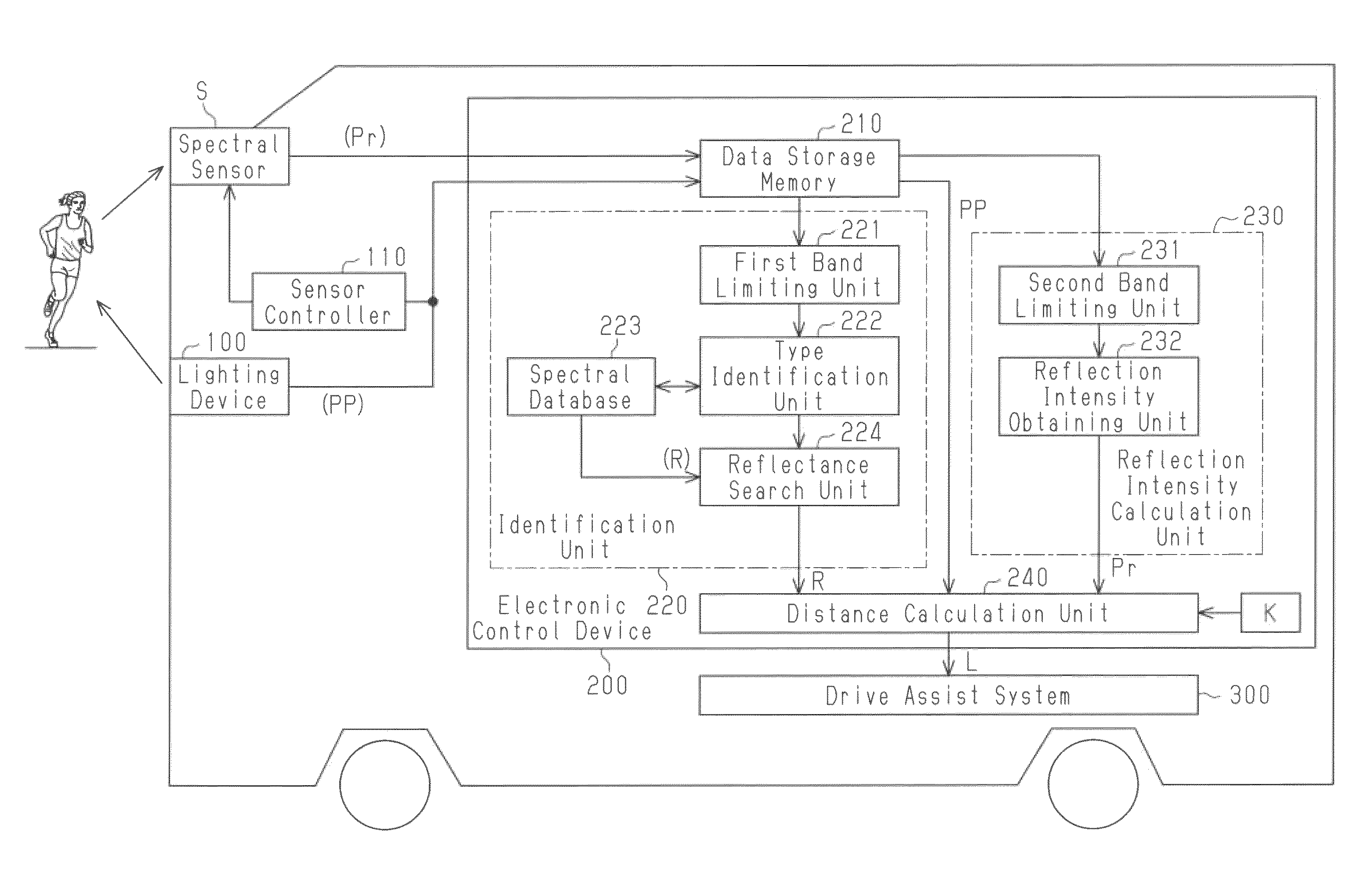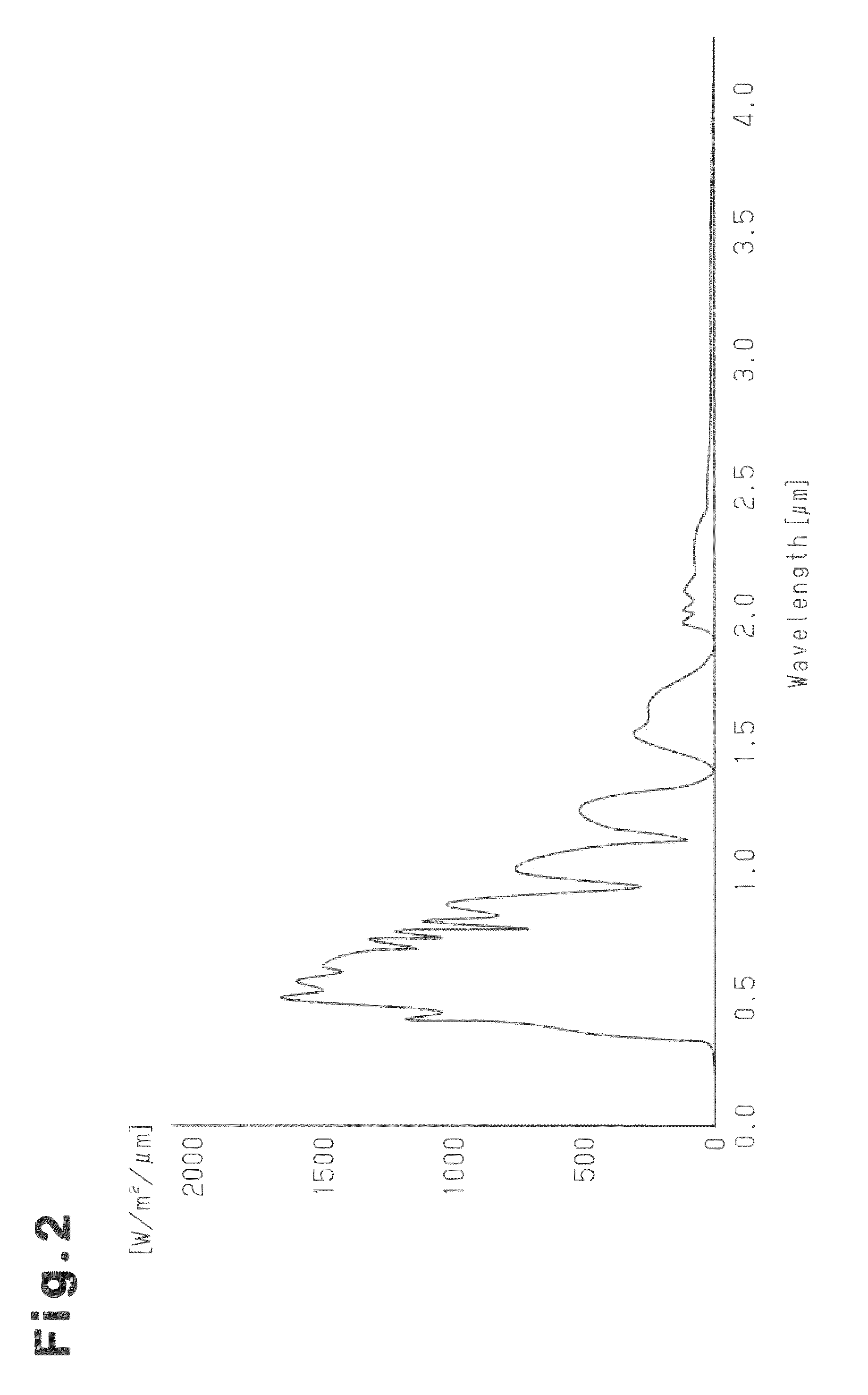Spectrum measurement device
a technology of spectral measurement and measurement target, which is applied in the direction of distance measurement, scene recognition, instruments, etc., can solve the problems of reducing recognition accuracy, reducing recognition accuracy, and changing the spectral of the measurement targ
- Summary
- Abstract
- Description
- Claims
- Application Information
AI Technical Summary
Benefits of technology
Problems solved by technology
Method used
Image
Examples
first embodiment
[0045]FIG. 1 illustrates the schematic configuration of a spectrum measurement device according to the present invention.
[0046]As shown in FIG. 1, the spectrum measurement device of this embodiment is mounted on a vehicle such as an automobile, for example, and includes a lighting device 100 capable of irradiating light of both wavelength bands having a high atmospheric absorption coefficient and a low atmospheric absorption coefficient to measurement targets that are objects such as pedestrians, traffic lights, or obstacles. The spectrum measurement device also includes a spectral sensor S for observation of spectral data on a measurement target irradiated by the lighting device 100. The spectrum measurement device further includes a sensor controller 110 that controls the light sensitivity or the like of the spectral sensor S. In this embodiment, the measurement target that is an object present in the vicinity of the vehicle is identified as one of the objects such as a human bein...
second embodiment
[0094]In the second embodiment described above, changes over time of spectral data are determined through difference operation on spectral data obtained at various different points in time. Alternatively, the changes over time of spectral data may be determined through division operation on spectral data obtained at various different points in time. In this case, the quotient Sw, which indicates a change over time in spectral data, is calculated by the following expression (3), where S and S+1 respectively represent the spectral intensity of spectral data obtained and extracted at different points in time t and t+1.
Sw=S(t+1) / S(t). (3)
[0095]It is then determined that the measurement target is approaching the vehicle if the quotient Sw exceeds “1”, and that the measurement target is going away from the vehicle if the quotient Sw is less than 1. If the quotient Sw is 1, it is determined that the relative distance from the measurement target to the vehicle is constant.
[0096]In the seco...
PUM
 Login to View More
Login to View More Abstract
Description
Claims
Application Information
 Login to View More
Login to View More - R&D
- Intellectual Property
- Life Sciences
- Materials
- Tech Scout
- Unparalleled Data Quality
- Higher Quality Content
- 60% Fewer Hallucinations
Browse by: Latest US Patents, China's latest patents, Technical Efficacy Thesaurus, Application Domain, Technology Topic, Popular Technical Reports.
© 2025 PatSnap. All rights reserved.Legal|Privacy policy|Modern Slavery Act Transparency Statement|Sitemap|About US| Contact US: help@patsnap.com



